David Meyer's Blog, page 10
April 5, 2013
Beale Ciphers: A Lost Treasure?
Between 1819 and 1821, Thomas Beale buried a whopping 2,921 pounds of gold and 5,100 pounds of silver in Virginia. It’s still there, waiting for someone to dig up. But there’s a catch. In order to find it, one must first decipher one of the most mysterious in history…the Beale Ciphers.
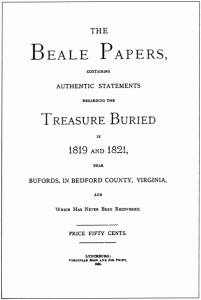
What are the Beale Ciphers?
Description: Cover of the Beale Papers (published 1885)
Source: Wikimedia Commons
The Treasure Trove of Thomas Beale
In 1817, a man named Thomas Beale led thirty Virginians on a western hunting trip. They left St. Louis in May and arrived at Santa Fe in December. After several months of little activity, a few members of the group embarked on an excursion. Several weeks later, they sent word that they had discovered gold in a ravine, 250 to 300 miles north of Santa Fe. Immediately, Beale set forth to examine the site and found a large cache of gold and silver.
The group worked the ravine for 18 months, gathering a large quantity of gold and silver in the process. Afterward, they decided to transport the treasure to a cave “near Buford’s tavern in the county of Bedford.” After a long journey, part of Beale’s group arrived in Bedford. Unfortunately, the cave in question was being used by others. So, Beale’s group dug a vault in the Blue Ridge Mountains and buried the treasure. Beale later returned to the ravine, gathered more treasure, and proceeded to deposit it in the vault.
The Beale Ciphers?
The treasure was to be split into thirty shares, one for each member of the group. However, the group faced a problem. They didn’t want anyone to know about the treasure. At the same time, members were still actively hunting and prospecting at the ravine. As such, they were worried about Indian attacks and outlaws. If they were killed in a raid, no one would ever know about the treasure or who had rightful claim to it.
So, Beale created the Beale Ciphers. The Beale Ciphers were three codes which would enable one to locate the treasure and distribute it to the rightful heirs in the event that the group didn’t survive. The first Beale Cipher revealed the location of the vault. The second Beale Cipher described the contents of the vault. And the third Beale Cipher provided names and residences of the group members as well as their heirs. In a letter, Beale stated that the Beale Ciphers would “be unintelligible without the key…”
Guerrilla Explorer’s Analysis
The full story of the Beale Ciphers is long and complicated. So, it’ll take me a few days to go through it. Tomorrow, we’ll look into what Beale did with those ciphers and how they became public knowledge. Stay tuned…the best is yet to come!
The post Beale Ciphers: A Lost Treasure? appeared first on Guerrilla Explorer.
Related posts:
The Lost Treasure of Machu Picchu?
The Lost Treasure of General Custer?
The Lost Treasure of the S.S. Gairsoppa?

April 4, 2013
Nazi Secret Weapons: The Rocket U-Boat?
Throughout World War II, Nazis scientists sought secret weapons to launch offensive attacks on American soil. What was the mysterious Rocket U-Boat? And how close did it come to destroying New York City?
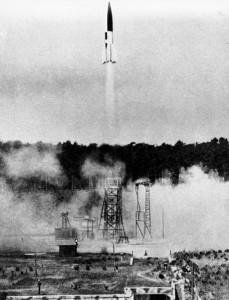
What was the Rocket U-Boat Secret Weapon?
Description: Launch of a V2 Rocket (Summer 1943)
Attribution: Bundesarchiv, Bild 141-1880 / CC-BY-SA
Source: Wikimedia Commons
Nazi Secret Weapons: The Rocket U-Boat?
Throughout World War II, the Nazis sought to build long-range, secret weapons (such as the Amerika-Bomber and the Sun Gun). In 1941, this desire led Nazi scientists to research the Rocket U-Boat. They hoped such a U-boat could travel across the globe, targeting cities on distant continents. In 1942, scientists developed and tested the first Rocket U-Boat. It was relatively simple, just a few rocket launchers mounted on the U-511′s deck. The test was a mixed bag. On one hand, the missiles fired just fine at depths of up to 12 meters. However, the lack of a guidance system rendered the missiles useless.
In 1943, Nazi scientists developed another secret weapon known as the V-1 flying bomb, an early predecessor to the cruise missile. It had a range of 160 miles. Paired with a U-Boat, it would be capable of long-distance strikes on any city in the world. However, the Nazi Luftwaffe showed little interest in helping to create the Rocket U-Boat, probably due to inter-service rivalry.
That same year, Nazi scientists developed another secret weapon known as the V-2 rocket. The V-2 was the world’s first long-range combat ballistic missile as well as the first rocket to achieve sub-orbital spaceflight. It had a range of 200 miles. Again, this seemed like the perfect fit for a Rocket U-Boat. And in late 1944, resources were finally allocated to it under Project Prufstand XII. The target of the Rocket U-Boat?
New York.
The Race to build a Rocket U-Boat?
The V-2 was much larger than the V-1 flying bomb. In fact, it was too large for any existing Nazi U-boat. Undeterred, Nazi scientists developed a 500-ton specially-constructed container for the V-2. The plan was to have a U-boat tow it across the Atlantic Ocean. Then sailors would flood the ballast tanks, causing the rocket to shift into a vertical position. Afterward, the sailors would fuel the rocket, prepare the guidance system, and aim it at New York.
The Nazis ordered three of these containers. At least one was actually built. It is unknown if this container was ever tested in any fashion.
Guerrilla Explorer’s Analysis
The Americans were well-aware of Nazi attempts to build a Rocket U-Boat secret weapon and prepared a contingency plan known as Operation Teardrop. In March 1945, six Nazi U-boats approached America. The U.S. launched Operation Teardrop and ended up destroying the four of the boats. It was later determined that none of these were Rocket U-Boats.
But that doesn’t mean the Rocket U-Boat was never launched. In February 1945, the U-1053 was carrying out diving trials off the coast of Norway. With all sides closing in on Nazi Germany, this seems like an odd time to worry about diving trials. Some historians think the U-1053 may have had an ulterior purpose, perhaps to test out a Rocket U-Boat system. The U-1053 shipwreck was located in March 2010. To my knowledge, it has yet to be fully explored.
The post Nazi Secret Weapons: The Rocket U-Boat? appeared first on Guerrilla Explorer.
Related posts:
The Nazi Sun Gun: Death from Above?
Did the Nazis Send a Man into Space?
Die Glocke & Nazi Wonder Weapons?

April 3, 2013
The Nazi Sun Gun: Death from Above?
Nazi Germany created many unusual, horrific weapons during World War II. One incredible weapon, however, failed to materialize. What was the Nazi Sun Gun?
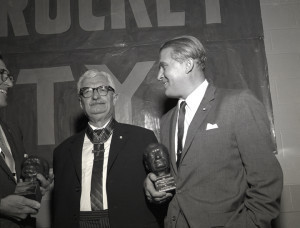
What was the Nazi Sun Gun?
Description: “Hermann Oberth presents the Hermann Oberth award to Dr. Wernher von Braun at a banquet hosted by the Alabama Section of the American Rocket Society (October 19, 1961).”
Attribution: NASA
Source: Wikimedia Commons
The Birth of the Nazi Sun Gun?
In 1929, a German physicist named Hermann Oberth wrote Wege zur Raumschiffahrt (Translation: Ways to Spaceflight). The book described Oberth’s vision of a manned orbital space station created from prefabricated parts. He also described a way to create electricity using a 100-meter wide concave mirror. The idea was to concentrate sunlight onto a single area and use steam turbines to convert the heat energy.
While Oberth’s mirror was designed to create useful energy, Nazi scientists saw another use for it. Namely, an orbital weapon called Sonnengewehr…or Sun Gun.
Launching the Sun Gun into Space
Plans for the Sun Gun were worked out by Nazi scientists at Hillersleben. They proposed creating a giant three-kilometer square mirror out of metallic sodium. Then they wanted to break it apart and launch the individual pieces into an orbit of 8,200 kilometers. In order to do this, the Nazi scientists hoped to use the Aggregate A11.
The A11 was a multistage rocket intended to deliver people and/or small payloads into low Earth orbit. At the time, it was being designed by Wernher von Braun (who later became chief architect of the Saturn V launch vehicle via Operation Paperclip, which helped land Neil Armstrong, Buzz Aldrin, and Michael Collins on the moon).
Oberth’s original plan was to send an unmanned rocket into space, containing six long cables. These cables would then unreel themselves, eventually covering a vast area. Nazi astronauts would then fly into space and attach pieces of the giant movable mirror to the cables.
How did the Sun Gun Work?
According to Life, Nazi astronauts would live inside the rocket, using large greenhouses to maintain fresh oxygen. They would remain in space, waiting for orders from radio or wireless telegraph. Upon receiving orders to attack, they would use rocket thrusters to move the mirror into position. The mirror would focus the sunlight, causing incredible devastation in the process.
Guerrilla Explorer’s Analysis
Fortunately, the Sun Gun never went past the theoretical stage. In fact, newspaper articles from 1945 say it would’ve taken 50 to 100 years to harness the sun’s energy in this fashion. However, Oberth disagreed, claiming it would take just 10 to 15 years. Oberth admitted the original mirror’s design might not have worked. However, he came to believe that a larger mirror would’ve done the trick.
“If the mirror were double the size mentioned, however, the irradiation would be four times as strong, and so on. The temperature on the surface irradiated by the double-sized mirror would be 200° C (392° F).” – Hermann Oberth, Man into Space (1957)
Water boils at 212 degrees Fahrenheit. So, 392 degrees would’ve been plenty hot…perhaps hot enough to change the course of the war itself.
The post The Nazi Sun Gun: Death from Above? appeared first on Guerrilla Explorer.
Related posts:
Did the Nazis Send a Man into Space?
Did the Nazi’s build America’s Atomic Bomb?
The Nazi Super-Soldier Program

March 27, 2013
End the Fed: Cyprus vs. the Federal Reserve?
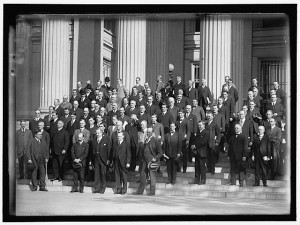
“Federal Reserve Board with bankers. Front: Warburg; Williams; Hamlin; Delano. In rear is large group of governors and bankers.” (1914)
Source: Library of Congress Prints and Photographs Division
The government of Cyprus is dominating the headlines at the moment, thanks to an audacious scheme to seize the savings of bank depositors. Many Americans are aghast at the situation. But is it really all that different from what the Federal Reserve does to U.S. depositors on a daily basis?
The Cyprus Conspiracy?
Cyprus isn’t the first European Union government to find itself in financial straits. However, the approach to dealing with those straits is unique. Usually, the EU provides immediate bailout money to such countries. In exchange, those countries agree to cut costs, raise taxes, and restructure debts.
This time, the EU required Cyprus to raise 5.8 billion Euros in order to receive a 10 billion Euro bailout. In order to pay for part of the bailout, the Cyprus government is effectively confiscating money from bank accounts worth more than 100,000 Euros (roughly equivalent to $129,000). Losses on those excess deposits might be as high as 40%…or perhaps even higher.
The Federal Reserve Conspiracy: Revisted?
The Cyprus seizure is theft by government, plain and simple. Ordinary Americans may find it hard to imagine this sort of thing ever happening in the U.S. But is the Cyprus Conspiracy all that different from the Federal Reserve Conspiracy? Not at all. Here’s more from Thomas Sowell at The American Spectator:
The U.S. government is very unlikely to just seize money wholesale from people’s bank accounts, as is being done in Cyprus. But does that mean that your life savings are safe?
No. There are more sophisticated ways for governments to take what you have put aside for yourself and use it for whatever the politicians feel like using it for. If they do it slowly but steadily, they can take a big chunk of what you have sacrificed for years to save, before you are even aware, much less alarmed.
That is in fact already happening. When officials of the Federal Reserve System speak in vague and lofty terms about “quantitative easing,” what they are talking about is creating more money out of thin air, as the Federal Reserve is authorized to do — and has been doing in recent years, to the tune of tens of billions of dollars a month…
(See the rest at The American Spectator)
The post End the Fed: Cyprus vs. the Federal Reserve? appeared first on Guerrilla Explorer.
Related posts:
War on the Federal Reserve?
The Federal Reserve Conspiracy
The Double Eagle Scandal

March 25, 2013
Whiskey Rebellion: A Rebellion against Taxes?
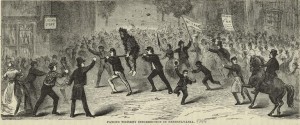
What caused the Whiskey Rebellion?
Description: “Famous whiskey insurrection in Pennsylvania”
Attribution: Our first century: being a popular descriptive portraiture of the one hundred great and memorable events of perpetual interest in the history of our country by R. M. Devens (1882).
Source: Wikimedia Commons
The history of the Whiskey Rebellion is shrouded in myth. Many scholars consider it a victory for the young U.S. government. But was it really a win for the anti-tax patriots?
What caused the Whiskey Rebellion?
The Whiskey Rebellion was the second major internal uprising in U.S. history (preceded only by Shays’ Rebellion). It was a response to an excise tax created by Alexander Hamilton, who served as Secretary of the Treasury under George Washington.
The U.S. government racked up $79 million in debt during the Articles of Confederation period. The Federal government owed $54 million of that amount. The individual states owed $25 million. Alexander Hamilton saw this as an opportunity to centralize government. He proposed to consolidate the debt. In order to pay it back, he would create a tax on domestic spirits. This was seen as a relatively safe luxury tax. In addition, he had support from those who viewed alcohol as a sinful indulgence. Thus, the Whiskey Act was passed into law in 1791.
What happened during the Whiskey Rebellion?
The Whiskey Tax was extremely unpopular, especially on the frontier (back then, the frontier consisted of Kentucky as well as parts of Pennsylvania, Maryland, Virginia, North Carolina, South Carolina, and Georgia). Many people in these areas just refused to pay the tax. But in western Pennsylvania, protestors fought back.
In July 1794, more than 500 people attacked the tax inspector’s home. George Washington sent a massive militia, 13,000 people strong, to quell the rebellion. By the time the militia arrived, the rebellion had dispersed. Some 20 people were arrested, but no one was ever convicted of a crime.
Guerrilla Explorer’s Analysis
Many scholars consider this a victory for the federal government. In his book, Character: Profiles in Presidential Courage, Chris Wallace provides a fairly typical pro-state treatment:
By acting decisively to quell the threat, Washington had proven that the federal government would stand behind the law. Many continued to fear that the government would destroy their dearly purchased freedoms. But as President Washington noted in his farewell address, a strong government, not a weak one, was the “main pillar…of your tranquility at home; your peace abroad; of your safety; of your prosperity; of that very Liberty which you so highly prize.”
However, the true story of the Whiskey Rebellion lies elsewhere, namely in the frontier. The U.S. government was never able to collect the Whiskey Tax on the frontier. In fact, it hardly tried. In fact, the Whiskey Rebellion, by and large, was mostly a non-violent tax protest. People just refused to pay it. Eventually, Hamilton and his fellow Federalists lost power and all excise taxes were repealed.
Here’s more on the Whiskey Rebellion from Murray Rothbard at LewRockwell.com:
The Whiskey Rebellion has long been known to historians, but recent studies have shown that its true nature and importance have been distorted by friend and foe alike. The Official View of the Whiskey Rebellion is that four counties of western Pennsylvania refused to pay an excise tax on whiskey that had been levied by proposal of the Secretary of Treasury Alexander Hamilton in the Spring of 1791, as part of his excise tax proposal for federal assumption of the public debts of the several states.
Western Pennsylvanians failed to pay the tax, this view says, until protests, demonstrations, and some roughing up of tax collectors in western Pennsylvania caused President Washington to call up a 13,000-man army in the summer and fall of 1794 to suppress the insurrection. A localized but dramatic challenge to federal tax-levying authority had been met and defeated. The forces of federal law and order were safe.
This Official View turns out to be dead wrong…
(See the rest at LewRockwell.com)
The post Whiskey Rebellion: A Rebellion against Taxes? appeared first on Guerrilla Explorer.
Related posts:
Did the U.S. Government kill Big Bands?
War on the Federal Reserve?
The Double Eagle Scandal

March 22, 2013
The Lost Apollo 11 Engines?

“At 9:32 a.m. EDT, the swing arms move away and a plume of flame signals the liftoff of the Apollo 11 Saturn V space vehicle and astronauts Neil A. Armstrong, Michael Collins and Edwin E. Aldrin, Jr. from Kennedy Space Center Launch Complex 39A.”
Source: NASA
On July 16, 1969, Apollo 11 launched from Kennedy Space Center, sending Neil Armstrong and Buzz Aldrin on a date with destiny. In the process, two massive F-1 engines were jettisoned into the ocean, seemingly lost for all time. Now, after a year-long expedition, billionaire Jeff Bezos has salvaged this history-making technology.
Salvaging the Apollo 11 Engines?
We first reported on this story in March 2012, calling it one of the most incredible salvage efforts of all time, ranking up there with Robert E. Peary’s search for “The Tent.” The cost of the recovery and restoration remains unknown but according to NASA, the engines will be displayed at the Smithsonian Institution’s National Air and Space Museum as well as Seattle’s Museum of Flight, respectively.
Who owns the Apollo 11 Engines?
The exact ownership of the engines remains unclear to me. I’m sure the U.S. government claims ownership. However, this would appear to fall under the Homesteading Principle. In essence, governments cannot legitimately own private property, since everything they have (including tax dollars) has been, in effect, taken with force. Even if you disagree with that assessment, NASA abandoned the engines, making no plans to ever recover them. Thus, I would argue no one owned the engines prior to discovery. Bezos Expeditions, on the other hand, is the rightful owner of its own labor. By salvaging the engines, it added its labor to the engines and thus, became the rightful owner.
Here’s more on the discovery of the lost Apollo 11 engines from Jeff Bezos at Bezos Expeditions:
What an incredible adventure. We are right now onboard the Seabed Worker headed back to Cape Canaveral after finishing three weeks at sea, working almost 3 miles below the surface. We found so much. We’ve seen an underwater wonderland – an incredible sculpture garden of twisted F-1 engines that tells the story of a fiery and violent end, one that serves testament to the Apollo program. We photographed many beautiful objects in situ and have now recovered many prime pieces. Each piece we bring on deck conjures for me the thousands of engineers who worked together back then to do what for all time had been thought surely impossible.
Many of the original serial numbers are missing or partially missing, which is going to make mission identification difficult. We might see more during restoration. The objects themselves are gorgeous…
(See the rest at Bezos Expeditions)
The post The Lost Apollo 11 Engines? appeared first on Guerrilla Explorer.
Related posts:
The Hunt for the Lost Space Engines?
Buying Real Estate…on another Planet?
Asteroid Mining & Space Invaders?

March 21, 2013
Dystopian Visions: Orwell vs. Huxley?
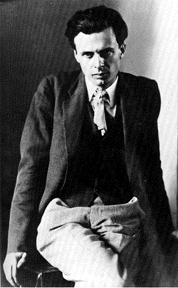
Orwell vs. Huxley: Whose Dystopian Vision was Correct?
Description: Aldous Huxley
Source: Wikimedia Commons
Aldous Huxley and George Orwell were two of the great prognosticators of the last century. Both men feared dystopian tyranny, albeit via different methods. At this point in history, who looks more correct?
In Huxley’s dystopian novel Brave New World, citizens are controlled by placating them. In Orwell’s 1984, the government controls citizens via constant oppression and mass surveillance. Both dystopian visions are fearful and ring true in today’s world although I’d give the slight edge to Huxley. Here’s a good summary on the competing dystopian visions from Neil Postman’s book, Amusing Ourselves to Death: Public Discourse in the Age of Show Business:
What Orwell feared were those who would ban books. What Huxley feared was that there would be no reason to ban a book, for there would be no one who wanted to read one. Orwell feared those who would deprive us of information. Huxley feared those who would give us so much that we would be reduced to passivity and egoism. Orwell feared we would become a captive audience. Huxley feared the truth would be drowned in a sea of irrelevance. Orwell feared that we would become a captive culture. Huxley feared we would become a trivial culture, preoccupied with some equivalent of the feelies, the orgy porgy, and the centrifugal bumblepuppy.
As Huxley remarked in Brave New World Revisited, the civil libertarians and rationalists who are ever on the alert to oppose tyranny “failed to take into account man’s almost infinite appetite for distractions.” In Brave New World, they are controlled by inflicting pleasure. In short, Orwell feared that what we hate would ruin us. Huxley feared that what we love will ruin us.
(Read the rest via Amusing Ourselves to Death: Public Discourse in the Age of Show Business)
The post Dystopian Visions: Orwell vs. Huxley? appeared first on Guerrilla Explorer.
Related posts:
Police State Update: Do Police Officers Lie?
The Anti-Conspiracy Conspiracy Theory
The End of the U.S. Postal Service?

March 20, 2013
Did the U.S. Government kill Big Bands?
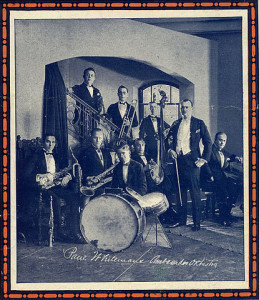
Did the U.S. Government kill off Big Bands?
Description: Paul Whiteman and his orchestra, predecessors to the Big Band era (1921)
Source: Wikimedia Commons
In 1935, Benny Goodman launched the Big Band era with a famous performance in Los Angeles. By 1946, the Big Band era was dead. Despite high popularity, it was replaced by the far less dance-friendly (and far less popular) BeBop era. What happened to the Big Band era?
The U.S. government holds a substantial part of the blame. In 1944, the U.S. government imposed the so-called “Cabaret Tax,” partly to raise funds for World War II. Essentially, it placed a 30% tax rate on all establishments that “contained dance floors, served alcohol and other refreshments, and/or provided musical entertainment.” The tax, like so many others, was supposed to be temporary. But when it was reinstated, dance halls closed across the nation. Thanks to the extra cost of doing business, few places could afford to hire big bands. Thus, many big bands were forced to break apart. Musicians formed smaller bands and started playing non-danceable music. Thus, the era of Bebop began. Here’s more on the government’s war on Big Bands by Eric Felten at The Wall Street Journal (paywall protected):
These are strange days, when we are told both that tax incentives can transform technologies yet higher taxes will not drag down the economy. So which is it? Do taxes change behavior or not? Of course they do, but often in ways that policy hands never anticipate, let alone intend. Consider, for example, how federal taxes hobbled Swing music and gave birth to bebop.
With millions of young men coming home from World War II—eager to trade their combat boots for dancing shoes—the postwar years should have been a boom time for the big bands that had been so wildly popular since the 1930s. Yet by 1946 many of the top orchestras—including those of Benny Goodman, Harry James and Tommy Dorsey—had disbanded. Some big names found ways to get going again, but the journeyman bands weren’t so lucky. By 1949, the hotel dine-and-dance-room trade was a third of what it had been three years earlier. The Swing Era was over.
Dramatic shifts in popular culture are usually assumed to result from naturally occurring forces such as changing tastes (did people get sick of hearing “In the Mood”?) or demographics (were all those new parents of the postwar baby boom at home with junior instead of out on a dance floor?). But the big bands didn’t just stumble and fall behind the times. They were pushed…
(See the rest at The Wall Street Journal)
The post Did the U.S. Government kill Big Bands? appeared first on Guerrilla Explorer.
Related posts:
The Guatemala Syphilis Scandal
What is the Report from Iron Mountain?
Happy Birthday Income Tax (Now, go away already!)

March 19, 2013
Reversing Extinction: The Passenger Pigeon?

Should the Passenger Pigeon be brought back from Extinction?
Description: Hunters take aim at a flock of passenger pigeons
Attribution: The Illustrated Shooting and Dramatic News (July 3, 1875)
Source: Wikimedia Commons
As cloning technologies improve, the odds of reversing extinction continue to grow. Reviving the passenger pigeon, extinct since 1914, now appears to be a distinct possibility. But a larger question remains, namely how will these “extinction clones” survive in the modern world?
If the goal is to make them zoo exhibits, then a few passenger pigeons will suffice. But if the goal is to reintroduce them to nature, scientists could be in for a rude awakening. Passenger pigeons once existed in massive flocks and traveled up and down the east coast of the United States. In the process, they destroyed forests, picked trees clean, and left behind miles of feces. Could modern forests endure such an onslaught?
Here’s more from Kelly Servick at Wired Science:
Twelve birds lie belly-up in a wooden drawer at the Berkeley Museum of Vertebrate Zoology. Bloated with stuffing, their ruddy brown chests resemble a row of sweet potatoes. Slate-blue heads and thin white tails protrude in perfect alignment, except for one bird that cranes its neck to face its neighbor. A pea-sized bulge of white cotton sits where its eye should be. A slip of paper tied to its foot reads, “Ectopistes migratorius. Manitoba. 1884.” This is the passenger pigeon, once the most abundant bird in North America. When Europeans first landed on the continent, they encountered billions of the birds. By 1914 they were extinct.
That may be about to change. Today scientists are meeting in Washington, D.C. to discuss a plan to bring the passenger pigeon back from extinction. The technical challenges are immense, and the ethical questions are slippery. But as genetic technology races ahead, a scenario that’s hard to imagine is becoming harder to dismiss out of hand.
About 1,500 passenger pigeons inhabit museum collections. They are all that’s left of a species once perceived as a limitless resource. The birds were shipped in boxcars by the tons, sold as meat for 31 cents per dozen, and plucked for mattress feathers. But in a mere 25 years, the population shrank from billions to thousands as commercial hunters decimated nesting flocks. Martha, the last living bird, took her place under museum glass in 1914…
(See the rest at Wired Science)
The post Reversing Extinction: The Passenger Pigeon? appeared first on Guerrilla Explorer.
Related posts:
The Pigeon…that Saved the Lost Battalion?
Return…from Extinction!
Dinosaurs…with Feathers?

March 17, 2013
Did Ancient Mariners use Sunstones to Navigate?
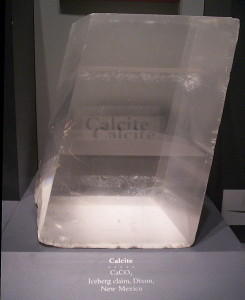
The Ancient Sunstone: Was it an Iceland Spar? Description: Large Iceland Spar at the National Museum of Natural History in Washington, DC.
Attribution: Alkivar
Source: Wikimedia Commons
According to ancient Icelandic texts, a mysterious object known as a sunstone could locate the sun in a clouded-over sky. Such an object might explain how ancient mariners like the Vikings traveled across the oceans with otherwise rudimentary technology. But did sunstones actually exist? Or were they merely allegorical references?
Recently, researchers discovered a slab of mineral in a 16th century shipwreck. This mineral, known as Iceland Spar, might just be the mythical sunstone. Here’s more from Raphael Satter at the Associated Press (posted at R&D Mag):
A rough, whitish block recovered from an Elizabethan shipwreck may be a sunstone, the fabled crystal believed by some to have helped Vikings and other medieval seafarers navigate the high seas, researchers say.
In a paper published earlier this week, a Franco-British group argued that the Alderney Crystal—a chunk of Icelandic calcite found amid a 16th century wreck at the bottom of the English Channel—worked as a kind of solar compass, allowing sailors to determine the position of the sun even when it was hidden by heavy cloud, masked by fog, or below the horizon.
That’s because of a property known as birefringence, which splits light beams in a way that can reveal the direction of their source with a high degree of accuracy. Vikings may not have grasped the physics behind the phenomenon, but that wouldn’t present a problem.
“You don’t have to understand how it works,” said Albert Le Floch, of the University in Rennes in western France. “Using it is basically easy.”
(See the rest at R&D Mag)
The post Did Ancient Mariners use Sunstones to Navigate? appeared first on Guerrilla Explorer.
Related posts:
Ancient Sea Mariners?
Neanderthal Mariners?
Lost Secrets of the Ancient Physicians?




